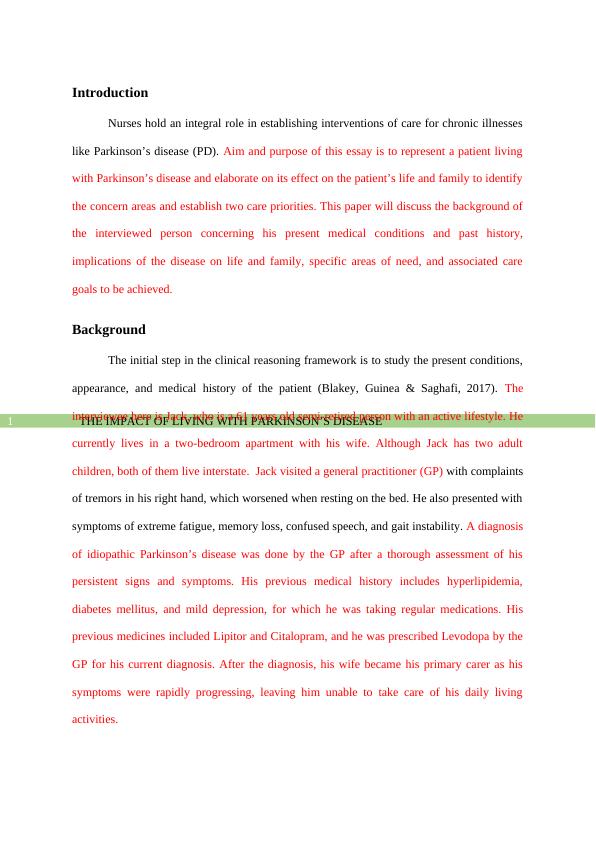The Impact of Living With Parkinson’s Disease
Write an essay to discover the impact of Parkinson's disease on the life of a person in the community and their family, and to identify care priorities/areas of need using the Roper, Logan & Tierney model for nursing and the Levitt-Jones Clinical Reasoning Cycle.
8 Pages2240 Words12 Views
Added on 2022-08-20
The Impact of Living With Parkinson’s Disease
Write an essay to discover the impact of Parkinson's disease on the life of a person in the community and their family, and to identify care priorities/areas of need using the Roper, Logan & Tierney model for nursing and the Levitt-Jones Clinical Reasoning Cycle.
Added on 2022-08-20
ShareRelated Documents
End of preview
Want to access all the pages? Upload your documents or become a member.
Person-Centered Care - PDF
|14
|3361
|57
Case Report for Specific Patient
|10
|2780
|84
Nursing Interventions for Respite Care: A Case Study of Mrs. Jessica George
|11
|3163
|57
NRSG259 - Parkinson's Disease and It's Treatment
|12
|2806
|69
Health Promotion Assignment 2022
|5
|1100
|30
Development of Patient Care Plan Essay
|10
|2658
|143



